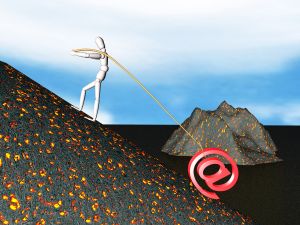
Writing Effective Emails
They’re lurking in every office. You may sit next to one. You may be one. They are the people who write overly formal, overly complicated and sometimes painfully long emails.
They just can’t help it.
Even inter-office emails on topics as mundane as the kickball game on Wednesday carry an air of formality appropriate for the Elizabethan Era. You expect to see a family crest embossed in wax below their electronic signature.
Please don’t misunderstand me. I am an ardent supporter of the use of proper grammar and punctuation in emails. It aggravates me to no end when people write only in lower-case letters or stream of consciousness. However, I do believe that the best emails are the most concise emails and that there is room for a certain level of informality when emailing at work.
I have done a good deal of research on the art of writing concise and effective emails. Below are links to the most useful tips that I’ve found.
Some general rules of thumb: use a good subject line; stay on point; and keep it brief.
This piece by Leo Babauta from WebWorkerDaily provides seven general rules for keeping emails concise:
- Use the minimum amount of sentences.
- State what you want right away.
- Write about only one thing.
- Leave out the humor and emotions.
- Use “if…then” statements.
- Review for ambiguity, clarity.
- Revise for conciseness.
On the Harvard Business Publishing website, David Silverman offers “4 Tips for Writing Better Emails.”
- Make clear what you would like the recipient to do.
- State the purpose of your email up front.
- Do not presume that the recipient has any pre-exisiting knowledge of a topic or necessarily remebers things that were stated in previously sent emails.
- Do not forward long email chains to get a point across.
Gina Trapani of Lifehacker.com believes that emailing is a two-way street and recipients can do their part to break the bad emailing habits of their colleagues.
- Edit poorly written subject lines of a received email when sending a reply.
- Lead by example by sending organized emails that separate different thoughts or questions ito ensure that all points are adequately addressed by the reader.
- “Get outside the inbox.” There are times when walking down the hall to discuss something with a colleague or picking up the phone to talk to a client can save tons of time and might even eliminate misunderstandings.
And, in case it weren’t complicated enough, don’t forget that many people are using wireless devices these days. Here’s a good piece from the Microsoft Small Business Center on email etiquette for the wire-adverse.
Another tip: Proofread your emails. If you say there are “4 Tips”, actually list 4 tips. 🙂
haha, good catch Peter! Kayla is going to make the edit
cheers,
Matt